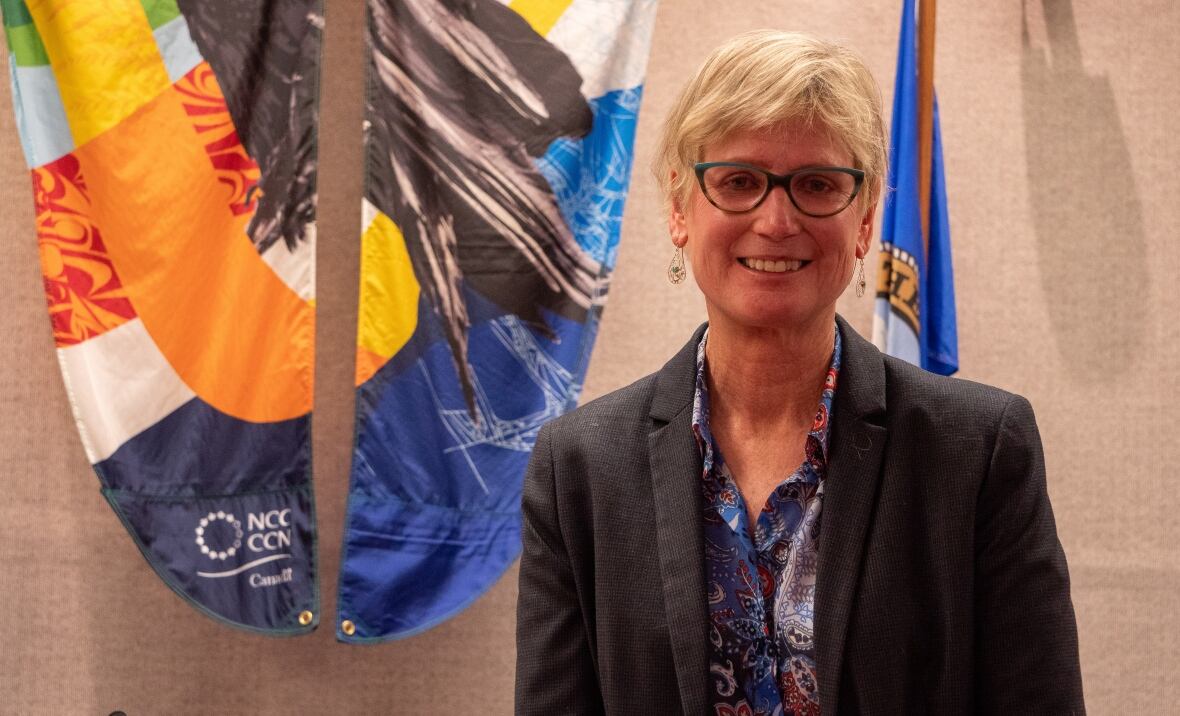City of Whitehorse hiring staff, mulling rule changes to tackle graffiti
Mayor says graffiti in the city is a growing problem

A tagged city looks like an unloved city. That's what Whitehorse Mayor Laura Cabott said at Monday night's Standing Committees meeting in council chambers.
"We have a problem here in the city of Whitehorse and it's continuing to grow," Cabott said. She was responding to proposed amendments to the city's graffiti management policy. "And I don't mean a problem just for corporate City of Whitehorse, but for the city of Whitehorse."
Mélodie Simard is the manager of parks and community development. Simard presented the amendment to council.
Simard told council the incidence of graffiti has increased in the city. Enhancing the downtown core is part of the city's 2022 to 2024 strategic priorities, and reducing graffiti falls under that priority.
Simard said the city has received $37,940 from the Crime Prevention and Victim Services Trust Fund to hire two staff for June, July and August.Their jobs will be to implement a graffiti management program.
As part of that program, Simard said the Parks Department will create and manage a legal art initiative. It would commission youth to create murals and graffiti art on specific city assets such as garbage bins. This would be done in tandem with anti-graffiti messaging and other beautification efforts.

Counc. Jocelyn Curteanu asked if city staff had met with any youth or youth organizations to ask if such a program was something they even wanted.
Oshea Jephson, communications manager with the city, says staff are meeting with the Boys and Girls Club this week.
Joe Zucchiatti is the president of the Skate for Life Alliance in Whitehorse. He spoke with the CBC on Tuesday afternoon.
He said city staff recently spoke with him about skate park maintenance. This included the issue of graffiti and the possibility of a street art program.
"I know kids who do graffiti, but I'm not a kid who does graffiti," says Zucchiatti. "So I don't really understand the culture, but I do know that it's a little bit of a catch me if you can sort of a game. I think they would definitely make use of a sanctioned spot, whether it will stop them from doing it on private businesses downtown, that remains to be seen."
Still, he said he has spoken with youth who said they'd be keen to participate in a city-led initiative, particularly if it included panels they could paint at the park.
Zucchiatti also confirmed that spray paint can present a hazard for skaters. He says he supports the amendment to disallow painting on the bowl, ramps and rails. When paint is wet, it's slippery. When it's dry, the same can be true after snow or rainfall. Then there's the matter of respect for the park.
He says there's a misconception that skating and graffiti go hand-in-hand. He says he recently visited a number of skate parks in California and they're spotless.
"If you want to have a place that you want people to respect, it's a little harder when you've got cusswords spray painted everywhere and crudely rendered penises and whatnot," he says.
The amendment also suggests removing existing exemption zones. Under the city's current policy, these are areas where graffiti is allowed. These include public notice kiosks, areas not directly visible to the public and the skateboard park. The amendment seeks to remove public kiosks and spaces not visible as exemption zones. It also aims to amend the skateboard park provision so graffiti isn't allowed on infrastructure such as ramps, bowls and rails. The reason for that is that wet paint can lead to slips. Once dried, it can create an uneven surface for skating.
Additional potential measures include a rebate on paint purchased by individuals or businesses in order to cover graffiti, and regulations around the sale of spray paint.
Enforcement lacking
Coun. Dan Boyd said he supported many of the changes, but found enforcement to be noticeably absent from the policy — something he thinks the public, and certainly the taggers, will notice as well.
"I would like to see language in our policy that actually refers matters and encourages RCMP to participate in trying to manage this problem as well," said Boyd.
Krista Mroz, director of community services, said that city bylaw staff are working with the RCMP on enforcement around this initiative.
Ultimately, said city manager Jeff O'Farrell, the city's maintenance bylaw is the primary instrument of enforcement around graffiti.
Mayor Cabott suggested including a line in the amended policy that explicitly states the bylaw department will enforce the policy.
Council was in agreement on this.
The issue will come back to council next week.